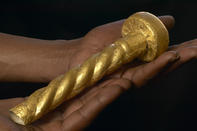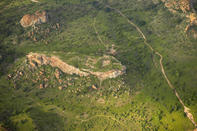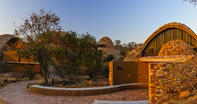Remarkable Natural Hill Fortress
There is a remarkable natural hill fortress in Mapungubwe, re-enforced in parts by dry-stone masonry walling, is the unusually intact centre of the first known kingdom in South Africa.

Mapungubwe flourished as an important trading empire at the confluence of the Limpopo Shashe rivers (where South Africa, Botswana and Zimbabwe meet) from 1220 to 1290, but it was only discovered in the 1930’s. The gold artefacts excavated from Mapungubwe, that form part of the national estate, are now considered to be South Africa’s greatest Iron Age legacy.
Mapungubwe Artefacts

Although the artefacts of Mapungubwe, the Golden Rhino, Sceptre and Bowl, are on display at the University of Pretoria, you can still go on a guided tour of the various archaeological locations in the Mapungubwe National Park - soon to be part of the Limpopo-Shashe Transfrontier Park.
UNESCO considered the site to be of 'outstanding universal value'. Of particular interest is the sandstone hill which gives the site its name, and probably acted as the capital of a trading kingdom which flourished around 1000 years ago.
Mapungubwe Interpretation Centre

At the World Architecture Festival in Barcelona in November 2009, the Mapungubwe Interpretation Centre in Limpopo, designed by Johannesburg firm Peter Rich Architects, was declared the 'world building of the year'.
It looks like something between a giant termite colony and Gaudi might have done had he been asked to design a building in harmony with Mapungubwe National Park and the ancient trading culture it encapsulates from. Its inspired off-centre timbrel vault arches and its mound like exterior domes to the earthen tiles manufactured on site by previously unemployed people, this is a form of organic architecture the likes of which have not been seen in this country since the Cape Dutch era.
By David Bristow